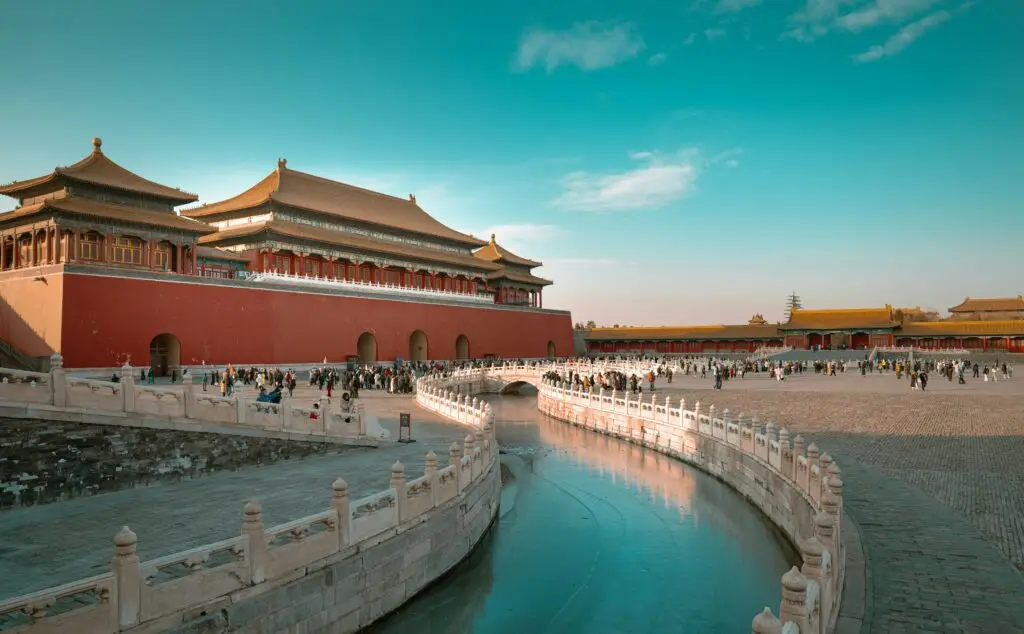My Personal Journey and Tips for Foreign Travelers
Shanghai is the kind of city that doesn’t just welcome you—it sweeps you into its rhythm. The first time I arrived, the skyline felt like a sci-fi movie: glass towers twisting into the clouds, the neon glow reflecting off the Huangpu River. But beneath all the modern glamour, I kept finding quiet corners, old streets, and flavors that spoke of centuries of tradition.
When I stepped out of the Maglev train station (yes, the magnetic levitation train that hits over 400 km/h), I felt like I had landed in the future. But just a taxi ride later, I was standing at The Bund, watching the sun set over the Pudong skyline.
The lights came on one by one—Pearl Tower glowing pink, the Jin Mao Tower shining like a steel lantern. The air was cool, the river breeze carrying faint traces of street food from nearby Nanjing Road. I stayed there for almost an hour, camera forgotten, just breathing it in.
Tip: If you want the best view of The Bund without the heavy crowds, go early in the morning. You’ll see locals jogging, elderly couples doing tai chi, and a quiet side of Shanghai most tourists miss.
The next day, I wandered into Yu Garden, a classical Chinese garden hidden in the middle of the city. Inside, the pace slowed. I followed winding stone paths, crossed small arched bridges, and listened to the gentle splash of koi in the ponds. The carved wooden pavilions felt like something from a painting.
I sipped jasmine tea at a small tea house nearby, watching shopkeepers set out displays of dumplings and souvenirs. The scent of shengjian bao—crispy-bottomed pork buns—pulled me into a small stall. The first bite was perfect: crunchy outside, juicy inside, steam rising into the cold air.
Tip: Bring cash or a mobile payment app like Alipay or WeChat Pay. Some small food stalls still don’t accept foreign cards.
The French Concession surprised me most. Wide, tree-lined avenues, art deco buildings, and cozy coffee shops made it feel like I had stepped into a European neighborhood—except the menus were in Chinese, and the smell of Sichuan peppercorns floated from nearby restaurants.
In the evening, I headed to the Shanghai Tower. The elevator ride to the observation deck took less than a minute, my ears popping as we climbed 118 floors. From up there, the city looked endless—thousands of lights stretching in every direction. Standing that high above the noise, I felt a mix of calm and wonder, like I was watching a living, breathing organism from above.
Tip: Book tickets online for popular attractions like the Shanghai Tower or Pearl Tower to skip long lines.
Shanghai made me feel small, but not in a bad way. It’s the kind of city that reminds you the world is vast, full of stories you haven’t heard and flavors you haven’t tasted. I loved how I could eat street noodles at a tiny plastic table one moment, then sip cocktails on a rooftop bar overlooking a glowing skyline the next.
It’s a city of contrasts—old lanes tucked between skyscrapers, quiet tea houses a few blocks from neon shopping streets. And it’s in those contrasts that Shanghai’s real magic lives.
Tips for Foreign Travelers to Shanghai
Transportation – The metro is fast, cheap, and has English signs. Get a metro card—it works on buses too.
Language – Many young people speak basic English, but learning a few phrases in Mandarin (like “xièxie” for thank you) goes a long way.
Payments – Mobile payments dominate China. Set up Alipay or WeChat Pay with your foreign bank card before arriving.
Food – Don’t just stick to big restaurants. Street food in Shanghai is safe, delicious, and part of the experience.
Crowds – Popular spots like The Bund and Yu Garden get packed in the afternoons. Early mornings or late evenings are quieter.
Weather – Shanghai summers are hot and humid; winters are chilly but charming, with fewer tourists.
Shanghai is not just a place to visit—it’s a place to feel. Let yourself get lost in the side streets, try something you can’t pronounce, and watch the city change from day to night. You’ll leave with more than photos; you’ll carry its energy with you.

